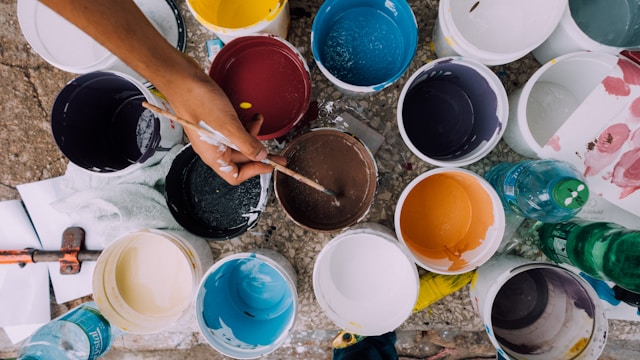Art Therapy
Several years ago I was invited to an art therapy workshop with a small group of colleagues. The session was given by Susanne Kingdon-Nielsen in the Hague. As both a counsellor and someone whose drawing ability drew to a halt at the age of six, I wanted to know how therapists go about getting clients to use their artistic talents.

Susanne gave us three exercises to do, reiterating that people learn better by doing than by being told what to do. She insisted that she wasn’t going to judge us on style or technique. The first task was to draw five must-have items to take on holiday. Apprehensive, I went about choosing coloured pencils and thinking about what to draw. Afterwards each of us was encouraged to say what we had drawn and why. The information that emerged was pertinent and personal; it was immediately clear that this sort of exercise would work with clients who are reluctant to make direct reference to their issues. Explaining our holiday priorities proved a good way of learning about each others’ personalities.
The second activity was done in pairs and involved collaboration. Using crayons, both partners had to draw the same shape – a large kidney bean – overlapping onto the other person’s half of the shared paper. We went repeatedly over the outline with a variety of colours in one continuous motion. Occasionally we collided with the other person’s moving crayon. This exercise is designed to get people to work together, to take equal responsibility for their joint creation and for the therapist to notice clients’ attitudes to space and how much of it they allot themselves and their partner, which often reflects how they see themselves.
For the third activity each of us selected a natural item from a table laid out with an attractive array of pretty stones, shells, feathers, autumn leaves and flowers. I was transported back to primary school as I took my feather back to my desk and the piece of paper I shared with my partner. After drawing around the object we then had to wet the paper so the shape would stay in tact. One of us was given blue acrylic paint and the other yellow. Susanne instructed us to paint around the outline over and over again until the yellow and the blue met to make green. How much of the paper we each used up, the amount of green on it, the natural object we chose made for lively discussion afterwards.
When a client doesn’t want to talk, it can be hard for the therapist to build trust and find a way into their world. I’m pleased to have learned how painting and drawing can encourage clients to open up. According to Susanne, there is no right or wrong, good or bad way of carrying out these activities, simply what’s on the page.
Click here to find out more about Susanne and her art therapy practice in The Hague: http://www.colourfulkids.nl/index.html
She works mainly with children. Click here for adult art therapy in Amsterdam: https://www.lidiatato.nl/en/art-therapy-therapy-amsterdam/